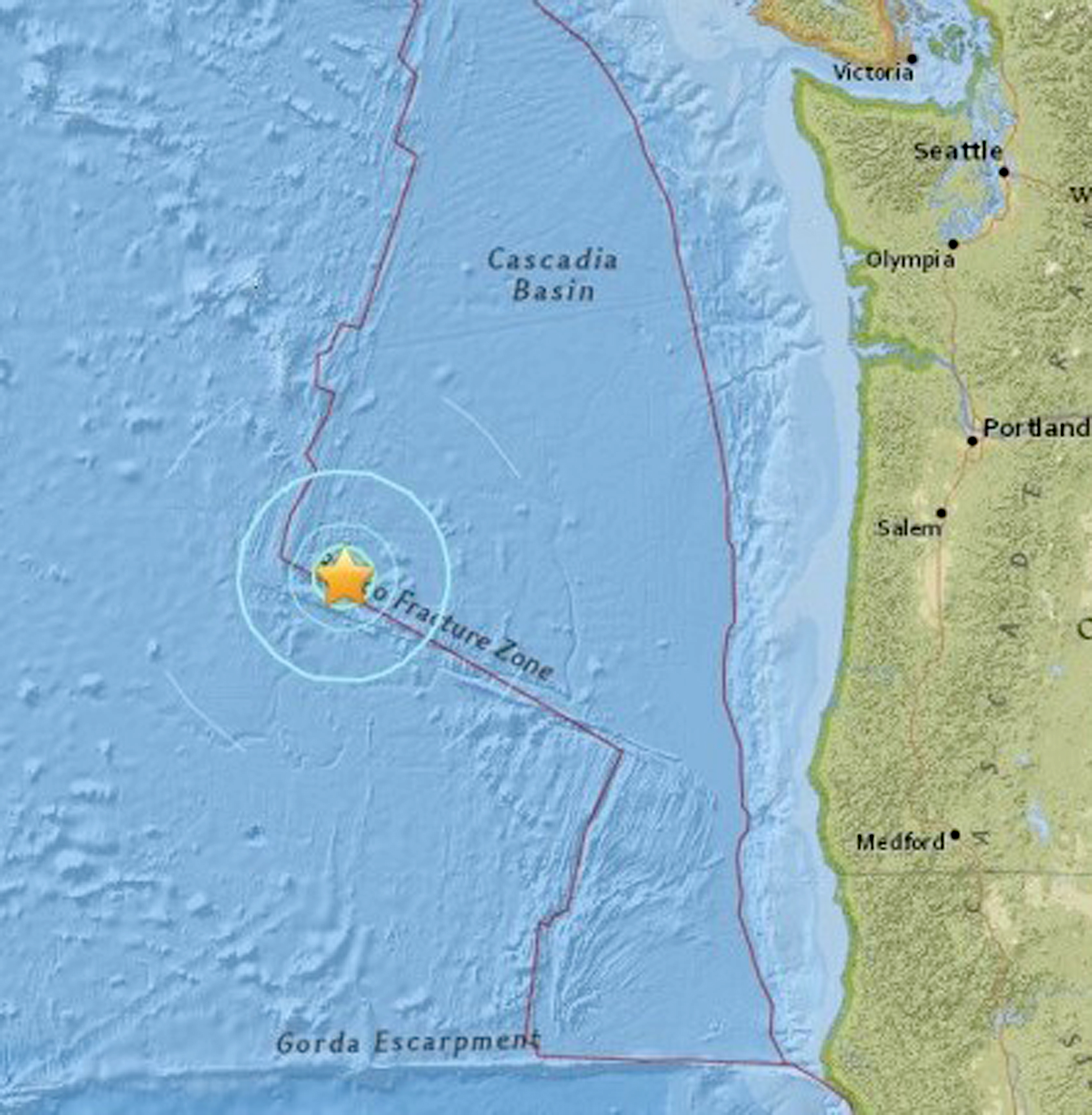Peninsula Daily News
news sources
A swarm of medium-strength earthquakes that rumbled deep in the Pacific Ocean 300 miles off the Oregon coast between Sunday night and Monday night seems to have settled down.
The latest quake in the swarm — a magnitude-4.2 at 8:11 Monday evening — has been followed by none around the undersea plate today, the Pacific Northwest Seismic Network reports. [ http://pnsn.org/earthquakes/recent ]
The strongest in the roughly 20-hour swarm was a magnitude-5.8 temblor that struck shortly after midnight Sunday, the U.S. Geological Survey reported.
Max Rudolph, a geologist at Portland State University, told The Associated Press that the quakes occurred near the boundary of the Juan de Fuca plate and the Pacific plate.
“There is a natural ongoing movement between these two tectonic plates,” Rudolph said.
No law enforcement agency along the Oregon coast was called by anyone claiming to feel any of the temblors.
“I’m not concerned about these particular events because they were located far offshore,” said Rudolph.
It usually takes an earthquake of magnitude 7 or better to trigger a tsunami, said geophysicist Paul Caruso of the U.S. Geological Survey.
The quakes have been shallow — about 6 miles beneath the ocean’s surface. They have been centered in an area about 300 miles west of Coos Bay, Ore., along what’s known as the Blanco Fracture Zone.
“It’s a well-known place for earthquakes,” said another agency geophysicist, Julie Dutton. “They’re frequent throughout the year.”
A 2008 agency report said the zone had produced about 70 quakes of magnitude 5 or greater in the previous 28 years, as many as eight in some years. Also in 2008, scientists detected a swarm of hundreds of smaller quakes.
In the Blanco faults, blocks of crust slide horizontally past each other, Dutton said. Faults that feature blocks rising and falling violently in relation to each other are the kind that can generate the energy for tsunamis, she said.

